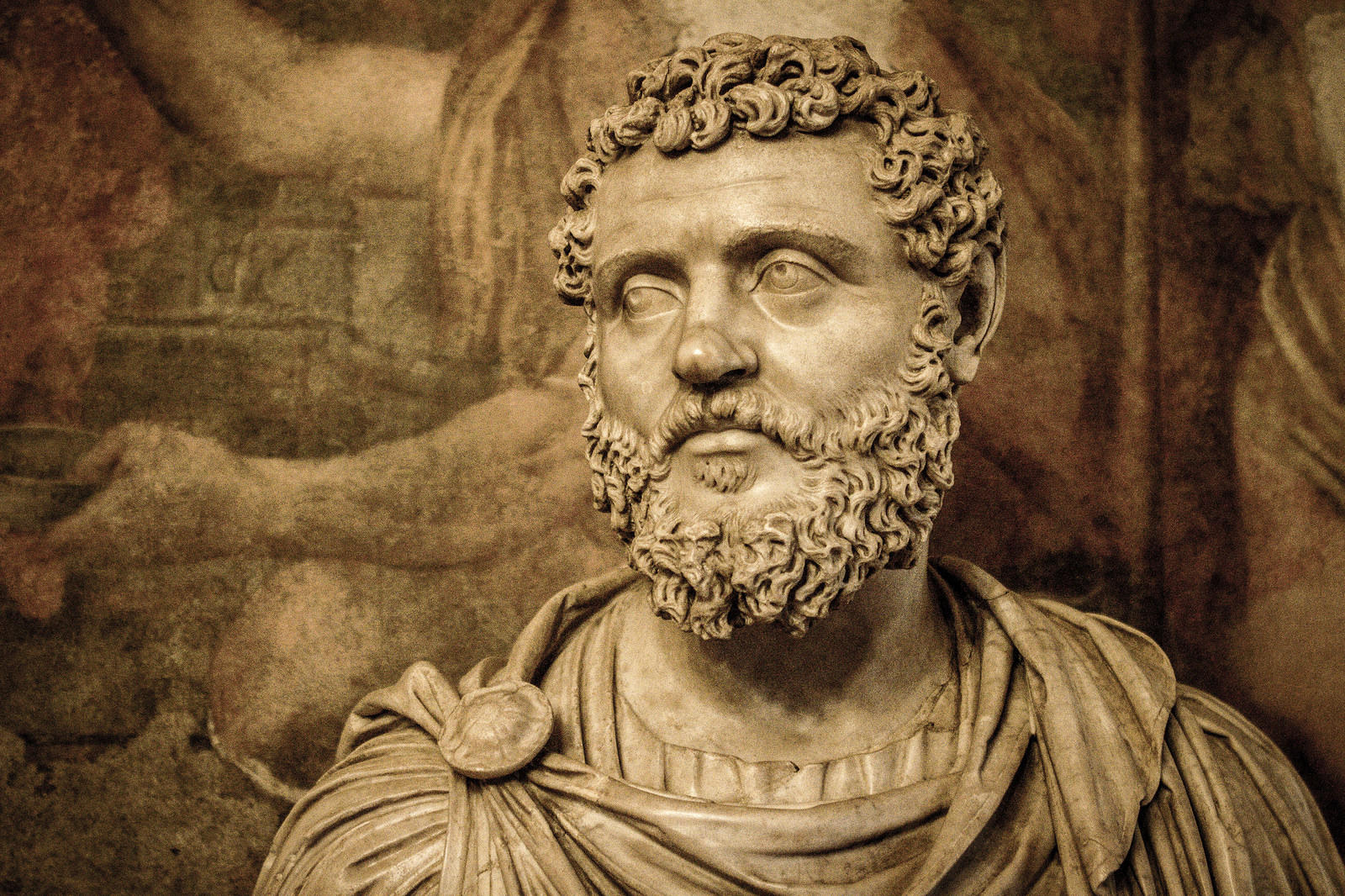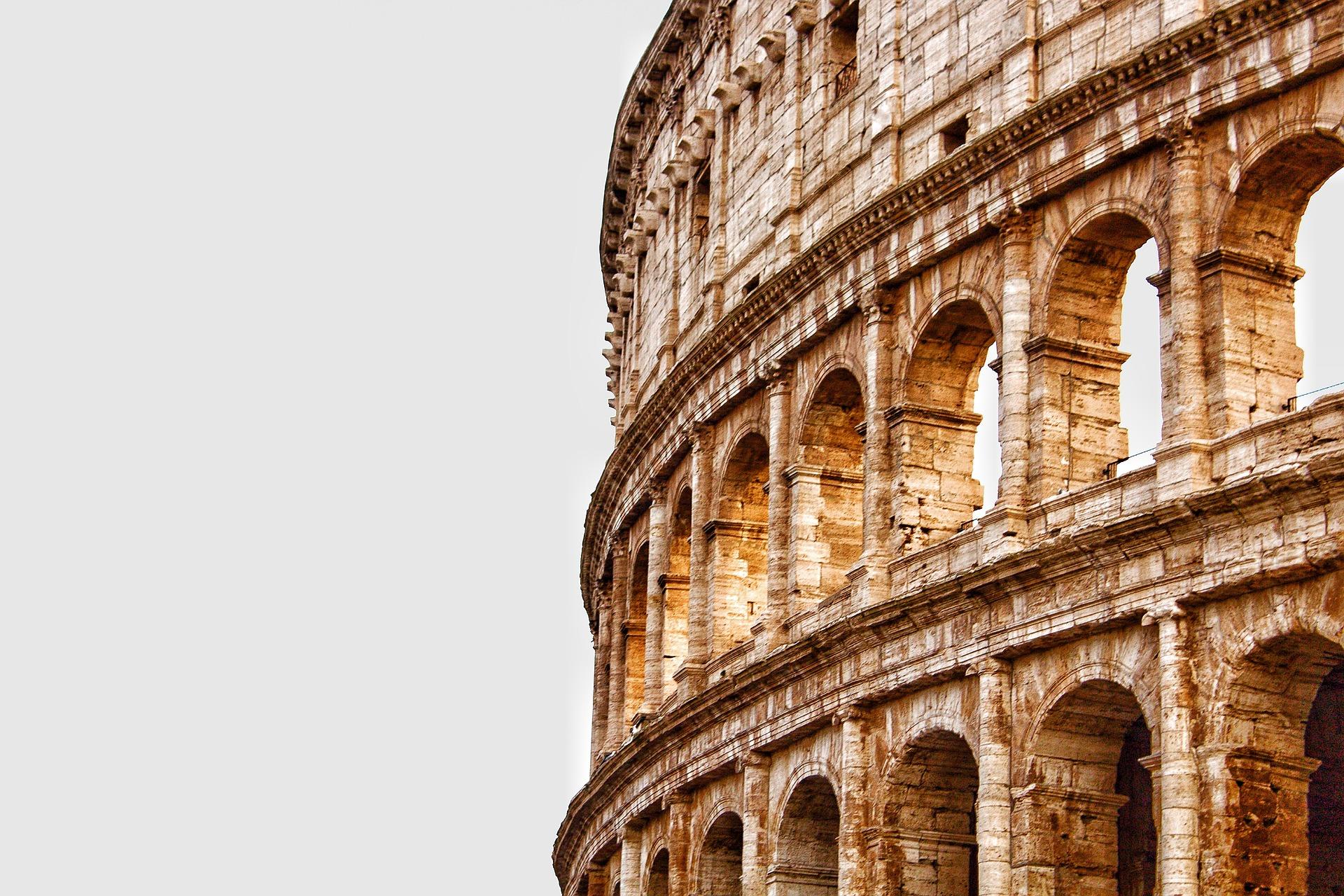
What was the Roman Empire?
The Roman Empire was a vast Empire with its governing structure centred in its capital city of Rome on the Italian peninsula of Europe. It spanned around the entire Mediterranean, encompassing many cultures and peoples.
There are also other “Roman Empires” in history such as the Holy Roman Empire and the Byzantine Empire, but these are not the subject of our discussion today, perhaps we will cover them one day in another article. Instead, we are specifically going to take a look at how the Roman Empire and how it arose from the Roman Kingdom founded in 753 BC and eventually fell during its decline from 27 BC to 476 AD.
When we talk about the fall of Rome, it's also common to mention the “sacking of Rome”, wherein “barbarians” lay waste to the city, looting and setting it ablaze. This happened multiple times during the decline of the Roman Empire and as an event marked the point at which Rome was too weak to even defend its capital, which is why historians can confidently say the Empire had fallen.
But before we talk about the end, we need to talk about the beginning, so let’s go back in history and try to sketch a brief timeline of events and rulers leading up to the height of the Roman Empire, before trying to explain what went wrong and why Rome would fall.

The Origin of Rome
Prior to adopting its name, the geographical region of modern-day Italy was inhabited by a melting pot of different peoples and cultures. The majority of these people were the Latins, who can be said to be the predecessors of Roman culture and language. The Latins were neighboured by the Etruscan civilisation and the Sabines, all of which intermarried with each other, sharing traditions and culture.
It is also worth noting that there were Greek colonies on the Italian peninsula, contributing a cultural similarity between Ancient Greece and Rome since before its very conception.
Rome was founded in 753 BC, and although we do not know exactly how it came to be, the myth of its origin is very well-known in European academia and literature.
It was said that the brothers, Romulus and Remus were abandoned at birth and raised by wolves. In their maturity, they both agreed to find a city where they had been raised, but would ultimately disagree on the location and name of the city. Romulus would call the city Rome, and Remus would call it Reme. The two fought over this disagreement, resulting in Remus being killed.
It is debated whether Romulus was truly the first king of Rome or just a mythological figure, but despite the lack of evidence for such a thing, there is no real reason to doubt that someone called Romulus could have founded the city.
Rome went through many kings after its founding, said to be elected by the people, but oftentimes coming to power through dubious means. One by one, the kings of Rome expanded its cultural influence and borders by means of conquest and cultural assimilation: a phenomenon in which through trade and migration, a smaller culture is effectively swallowed up and integrated into a larger identity without the need for invasion.
The final king of Rome, known as Tarquin the Proud, was the seventh king. Despite his accreditation with a great deal of Roman expansion, he achieved this conquest through skulduggery and underhanded tactics and was called a tyrant by his own people. He was eventually overthrown, and at this point, Rome decided to no longer put their faith in a king, changing the governance of the state into a democratic republic and marking the official beginning of the Roman Republic, as it “replaced” the Roman kingdom of old.
Of course, we know that eventually, Rome would return to a similarly despotic system. After several civil wars due to rivalry and dissonance between senators, there was a shift of power back towards a single person at a time.
The first of these emperors was Octavius in 27 BC and his reign as ‘first citizen’ marked the beginning of the Roman Empire.

Rome’s Rise to Power
The Roman Empire is remembered as one of the most well-organised and dominant empires in history. This wasn’t an accident either, Rome employed unprecedented tactics and organisation which the rest of Europe wasn’t prepared to meet on the field of battle.
Most of the time, however, the Roman Empire didn’t even need to directly engage the cultures it wished to colonise, since the Roman standard of living and way of life was widely seen as culturally advanced and desirable to its neighbouring lands.
Roman politicians and diplomats were just as effective in expanding Rome’s borders as its military, and in many cases, the Romans were able to infiltrate the political hierarchies of another kingdom and assimilate it from within.
A great example of this tactic in action takes us back to the last king, Tarquin the Proud, who famously sent his son to gain the trust of a resisting city under the premise that he would lead their defence against the Roman threat, only to seize power for himself and falsely implicate the other politicians and have them arrested on false charges. The result was a disorganised enemy with no leadership, which put up almost no resistance against Rome as it swept in to take control.
When it was time to engage the enemy on a military front, the Roman army was more than prepared for anything that could come their way. They were known for practising regimented marching and organising into complex formations, designed to defend in different situations.
A famous example of Roman cohesion is the tortoise formation, also known as the testudo formation. In this strategy, Roman soldiers would stand corps a corps and position their shields in such a way that each man was protected from the front, sides, and most importantly overhead.
This formation rendered a Roman force practically immune to a typically lethal hail of arrows, which would simply fall upon the raised shields. This allowed the Roman legionaries to close the gap between ranged troops and use their superior armour and weapons to their advantage in close quarters.
The aforementioned factors allowed Rome to overwhelm any technologically or tactically inferior foe, and they usually did so quickly. However, there were two main factors that would stunt the growth of the Empire once it reached its height.
The first of these factors was governance. As the Roman Empire continued to grow in size, it became continuously more complicated to maintain lore and order. The extremely large land and sea area of the Empire made it difficult for important information to be relayed back and forth, and conflicts of interest would cause corruption and chaos in the outer expanses of the Empire which increased the difficulty of further conquest.
The second factor was that as the Roman Empire expanded, it eventually bordered civilizations that could be considered its technological equal, or in some cases better.
The Parthian Empire was one such empire that halted the Roman Empire's eastward expansion for quite some time. They employed heavily armoured cavalry and horse archers while matching the Romans aptitude for siege warfare and engineering.

The Fall of the Empire
The fall of the Empire was a classic case of biting off more than one can chew. Leading up to its decline, the Roman Empire continued to experience the great strain of its overextended military and struggled to keep its supply chains operational. A combination of corruption and continuous harassment by barbarian tribes at its borders significantly weakened the Roman military, which later in its life relied on mercenary aid to keep up with its demands.
Mercenary soldiers would not fight without the motivation of pay, and it was actually a former mercenary ruler Odoacer who would rid the Romans of their last Emperor Romulus Augustus as he turned on them when they could no longer afford his tribe's loyalty.
By 476 AD, Rome had already been sacked multiple times, most famously by King Alaric in 410 AD. The sacking of Rome in 476 AD does not refer to a physical sacking of the city, instead refers to the deposition of the last emperor.
After the cultural centre of Rome fell, the Roman Empire was partitioned and reformed into the foundations of mediaeval Europe. The Roman Empire itself still persisted as a power, shifting its capital to Constantinople under the new “Eastern Roman Empire”. This was also known as the Byzantine Empire.
The Byzantine Empire would also change its culture and language back to Greek while continuing to refer to themselves as Romans.
This identity would be preserved by Europe even after the time of the Byzantine Empire. As the Ottoman Turks began their expansion through old Byzantine Territory into Europe, they were opposed by the Holy League, members of which were part of the Holy Roman Empire, which would exist until 1806.
Afterword
What a ride! We hope you enjoyed reading about the Roman Empire in all its different forms and its rise and fall from power. There is an almost endless well of factors to consider in the history of Rome and most of them won’t have been covered in this short article, but we encourage you to research the topic more if you have any questions. If you’re looking for something different to read, why not check out the other articles here on superprof which cover a wide range of different subjects? Until then, thanks for reading, and we hope to see you soon.















